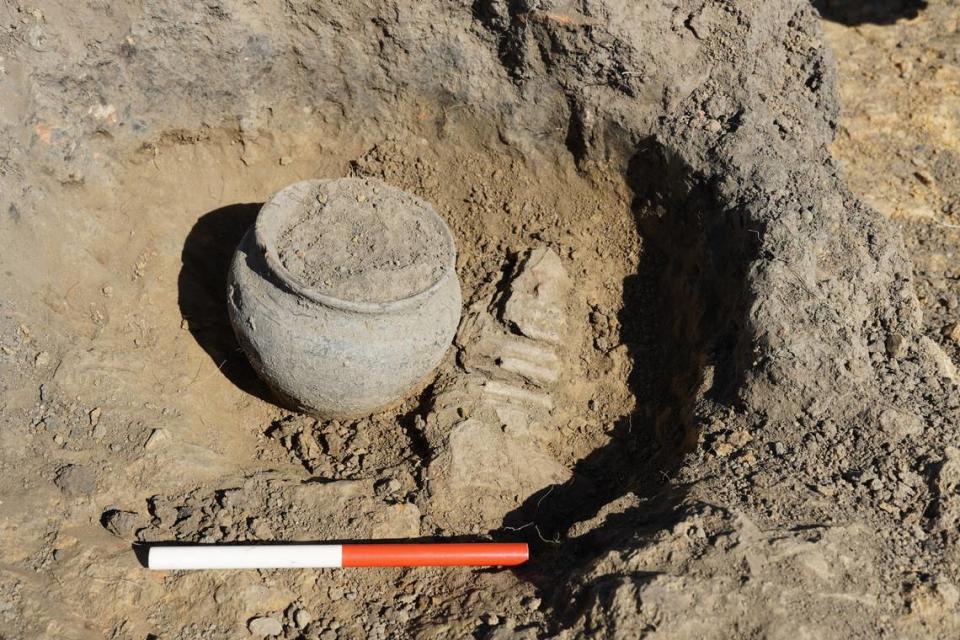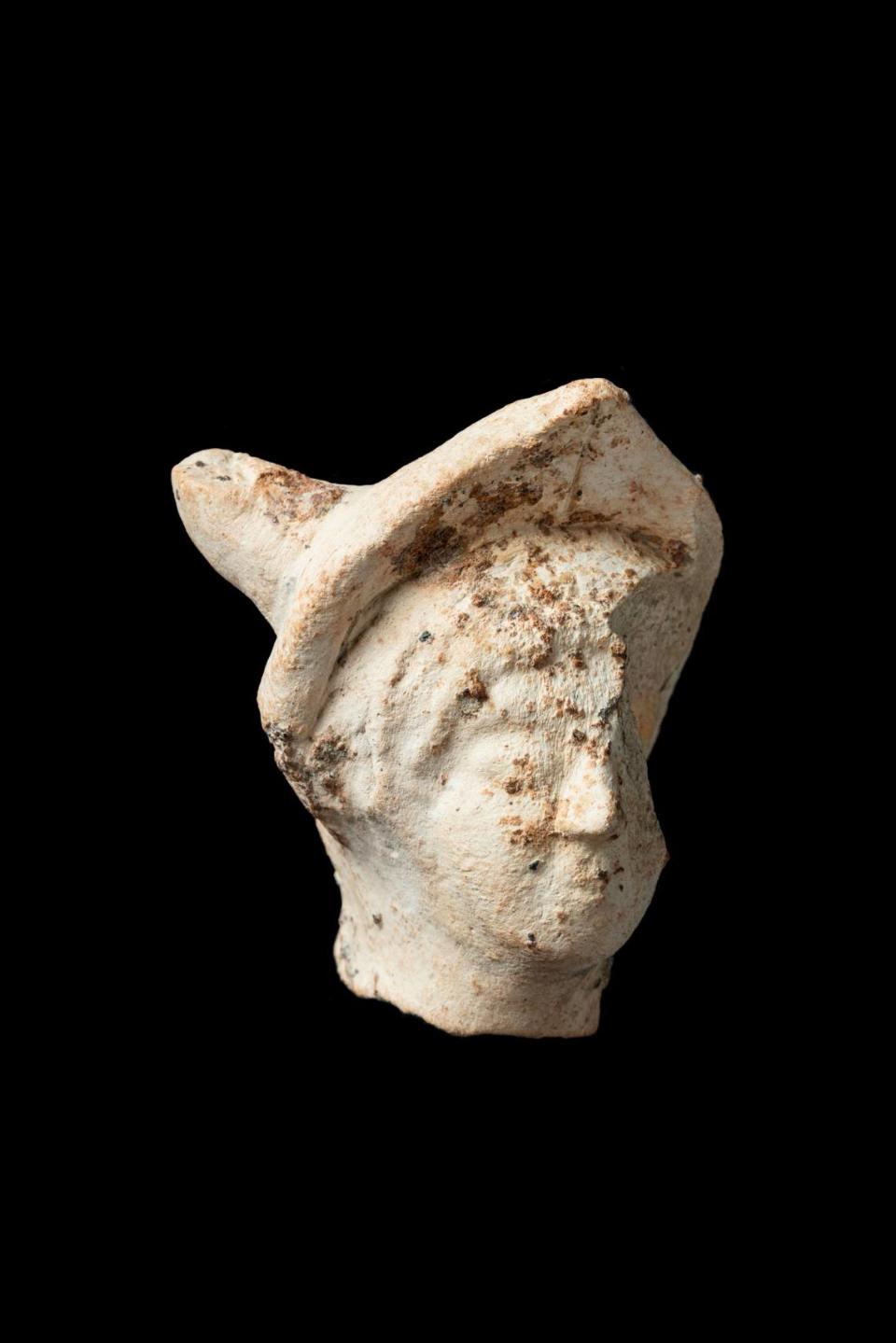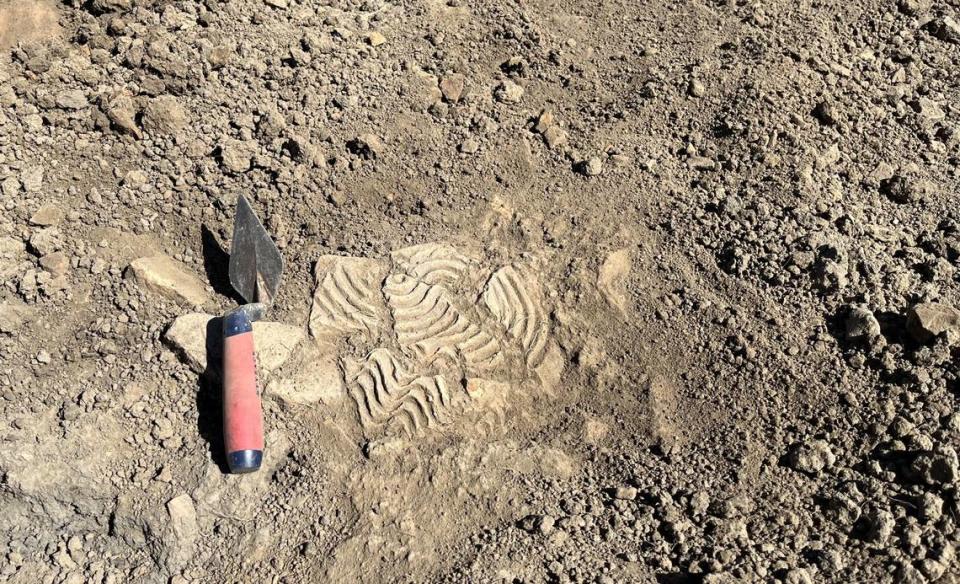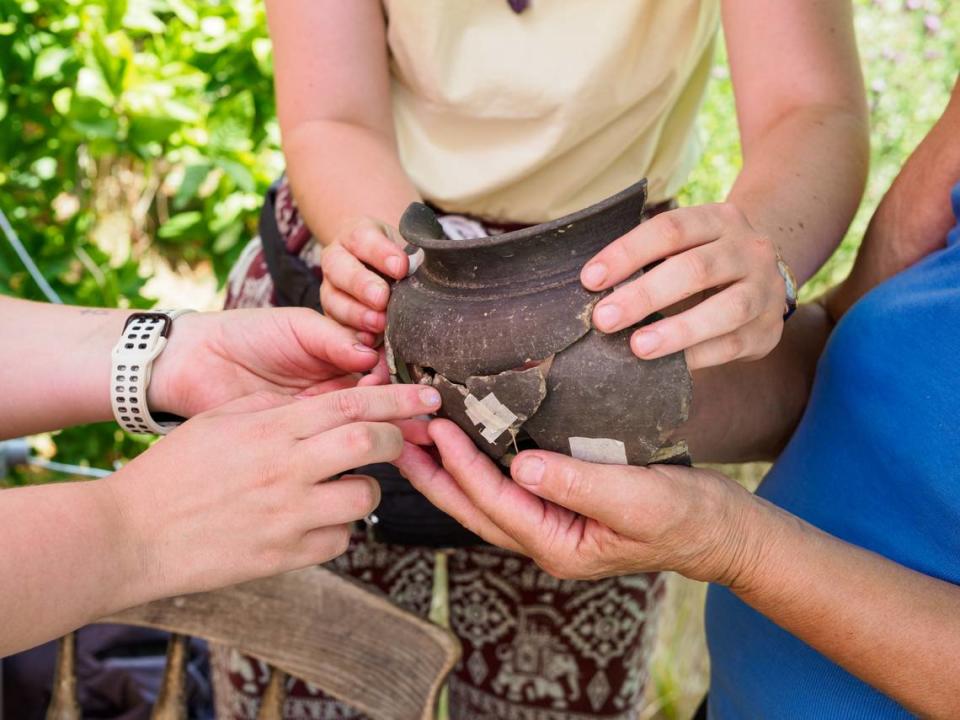‘Extremely rare’ treasure found at forgotten ancient Roman settlement in UK. See it
Scoop by scoop, archaeologists sifted through the tan-brown dirt of the United Kingdom and dumped it into a bucket. They were excavating the ruins of a medieval coastal community.
But their search revealed a different lost settlement — one with an “extremely rare” treasure.
Archaeologists unearthed the ruins of a forgotten ancient Roman settlement while excavating a medieval shipyard in Smallhythe Place, National Trust Archaeology said in a Feb. 23 Facebook post. The settlement was over 1,700 years old, dating from the first century A.D. to the third century A.D.
“We found tiles stamped with the mark of the Roman fleet (the Classis Britannica), ceramics including an intact pot, and evidence for buildings, boundary features and pits,” archaeologist Nathalie Cohen said in the post.

Uncover more archaeological finds
What are we learning about the past? Here are three of our most eye-catching archaeology stories from the past week.
→ 2,400-year-old underground discovery stumped experts for decades — until now
→ 800-year-old toy unearthed after firehouse demolition. See it
→ Metal detectorist unearths 'one-of-a-kind' gold treasure from 1,400 years ago. See it
But one artifact stood out: a roughly 2-inch tall head carved from clay.
Archaeologists identified the head as part of a pipeclay figurine of the ancient Roman god Mercury, the organization said. A photo shows the creamy white carving.

“To come across a head of a figurine of Mercury, in pipeclay, is incredibly rare,” Cohen said.
Mercury was the ancient Roman deity for fine arts, commerce and trade. “While he is the most common god for metal figurines, pipeclay examples are extremely rare, with less than ten so far found from Roman Britain,” archaeologists said.

Matthew Fittock, an expert of ancient Roman ceramics, explained that “pipeclay figurines were mainly used by civilians for private religious practice in domestic shrines and occasionally in temples and the graves of often sick children.”
“Rather than pieces being discarded because they were broken, there is evidence to suggest that deliberately breaking some figurine heads was an important ritual practice,” he said in the post. “Whole figurines are usually found in graves.”

Archaeologists did not find any other fragments of the Mercury figurine.
“This complete figurine probably would have depicted Mercury standing, either draped with a chlamys (a short cloak), or naked, holding a caduceus (a staff with two intertwined snakes),” the National Trust wrote in a Feb. 22 news release.
The pipeclay head and other ancient Roman artifacts will be on display at Smallhythe Place starting Feb. 28, the organization said.
Smallhythe Place is in Kent, a county along the southeastern coast, and about 50 miles southeast of London.
Hunt for ancient Roman pottery workshop leads to much older ‘exciting’ find
Man stumbles on ancient Roman artifact — weighing 13,000 pounds — in riverbed. See it
Metal detectorist stumbles on 4,000-year-old weapon while walking to his car. See it

